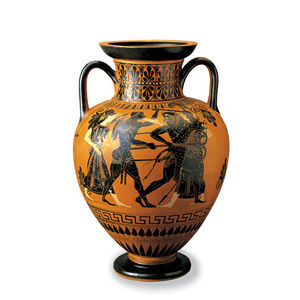Patterning and Symmetry
Math Topic: Patterning and Symmetry
Grade Levels: Grades 4 - 6
By: Ann Rule, Ph.D. and Anneke Bart, Ph.D. Saint Louis University
Lesson plan design adapted from: Wigging, G. & McTighe, J. 1998. Understanding by Design. Alexandria,
VA: ASCD.
Missouri GLEs
| Grade | GLE | Description |
|---|---|---|
| 4 | MA 4 1.6 MA 2 3.6 MA 2 1.10 |
describe geometric and numeric patterns. predict the results of sliding/translating, flipping/reflecting or turning/rotating around the center point of a polygon. Create a figure with multiple lines of symmetry and identify the lines of symmetry. |
| 5 | MA 4 1.6 MA 2 3.6 MA 2 1.6 |
make and describe generalizations about geometric and numeric patterns. predict, draw and describe the results of sliding/translating, flipping/reflecting or turning/rotating around a center point of a polygon. identify polygons and designs with rotational symmetry. |
| 6 | MA 4 1.6 MA 2 3.6 MA 2 1.6 |
compare various forms of representations to identify patterns. describe the transformation from a given pre-image using the terms reflection/flip, rotation/turn, and translation/slide. create polygons and designs with rotational symmetry. |
Mathematical Context:
- Problem Solving
- Reasoning
- Communication
- Making Connections
- Designing and Analyzing Representations
Identify Desired Results
Understandings:
- Students will understand the connection between patterns in art and patterns in mathematics.
- Students will understand the visual effects of patterns.
- Students will understand the key components of symmetry.
- Students will understand the properties of border patterns and their relationships to mathematics.
Essential Questions:
- Why is it important to explore patterns in the real world?
- What are the relationships between patterns in art and patterns in math?
- How can learning about patterns in different pieces of artwork develop a heightened sense of patterns in mathematics?
Planned Learning Experiences
Objectives:
- Through exploration of border patterns in pieces of artwork, students will be able to identify the properties of patterns.
- Through exploration of border patterns in pieces of artwork, students will be able to describe symmetries.
Assessment Evidence
After exploring border patterns, students will complete the attached worksheet on Border Patterns in Greek Art. Students are expected to accurately complete the worksheet with 90% accuracy.
Learning Activities
Motivator:
- A field trip to the St. Louis Art Museum to explore Greek Art
Procedures (what will students do?)
- Students will be directed to chosen pieces of artwork in the museum, where they are given background on the artwork e.g., a Greek Amphora, c. 530 BC, painted by Antimenes, etc.
- Students will explore the patterns on the vase looking for lines of symmetry.
- On the handout (attached) students will be asked to fill in the appropriate information as they explore the amphora.
- Students will design their own border patterns based on vertical lines of symmetry
- Students will design their own border patterns based on horizontal lines of symmetry.
Closure:
- Ask students key questions about what they’ve learned about border patterns and how they relate to both mathematics and art.
Border Patterns in Greek Art Worksheet
Objective: Explore properties of border patterns and describe symmetries

There are several border patterns on this beautiful vase. Let’s explore some of their properties:
1. There is a fairly broad pattern at the top of the Amphora:

A. Do you see mirror lines in this pattern? If so draw them on the image above.
B. Does the pattern have rotational symmetry? (in other words: does it look the same upside-down as it does right-side up?)
2. Towards the bottom of the amphora we see several more border patterns. Let’s look at one of them:

A. Does this border have any mirror lines?
B. Does this pattern have rotational symmetry? (in other words: does it look the same upside-down as it does right-side up?)
3. Draw a border pattern that has a vertical mirror line, but no horizontal mirror line.
4. Draw a border pattern that has a horizontal mirror line, but no vertical mirror line.